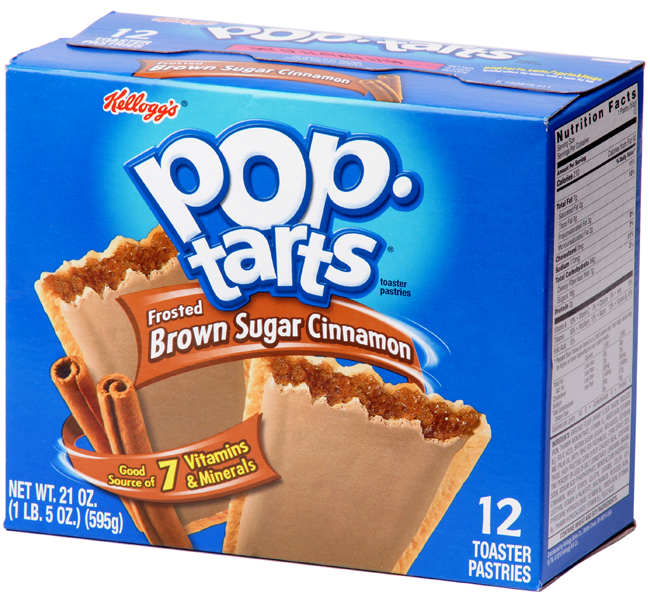
Part of the overwhelming allure of processed foods beyond the colorful, creative packaging shouting at you from the shelf is the orderly, symmetrical and very consistent shapes of each cracker, chip, cookie, puff and flake.
The freakish uniformity of each Oreo cookie to all others that ever existed lulls the consumer into a complacent and dazed shopping routine that requires neither thought nor examination to execute.
Contrast the mindless grab and go mentality of supermarket shopping with the thoughtful and slow progression of a consumer through a farmer’s market as vegetables, fruits, and artisanal foods are picked up, touched and examined closely to determine which are ripest, most nutritious, and of highest quality.
When processed foods like pop tarts are examined under a scanning electron microscope (SEM), however, this uniformity fades away and a very different picture emerges.
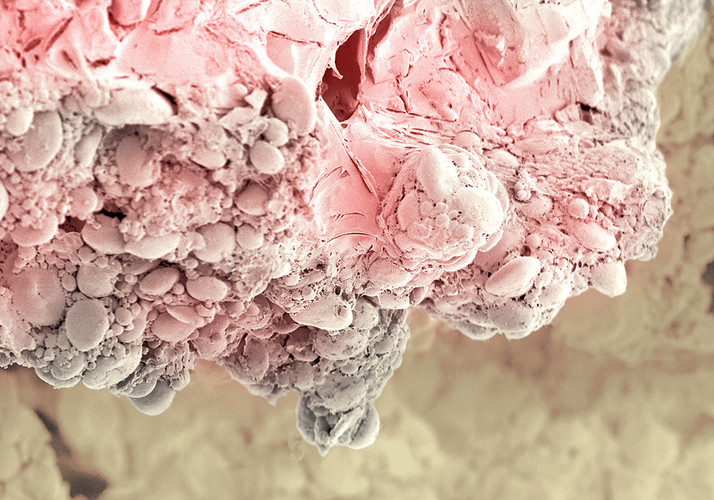 Misshapen chaos and a horrifying lack of uniform chemical structure is revealed at 30,000 times the actual size.
Misshapen chaos and a horrifying lack of uniform chemical structure is revealed at 30,000 times the actual size.
In fact, artist/photographer Caren Alpert declares that pop tarts at electron microscope magnification strikingly resembles a pink calcium deposit.
Yuck!
Contrast the scary disharmony of a pop tart’s magnified chemical structure with the precision and conformity of a pineapple leaf. Do all pineapple leaves look the same? Definitely not. But under an electron microscope, the true beauty and order is revealed.
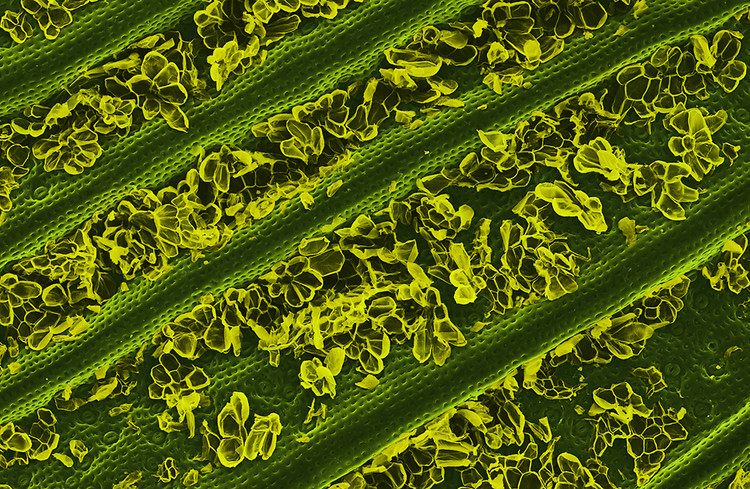
How about a fortune cookie? Does this look like something our digestive system would welcome and know exactly what to do with?
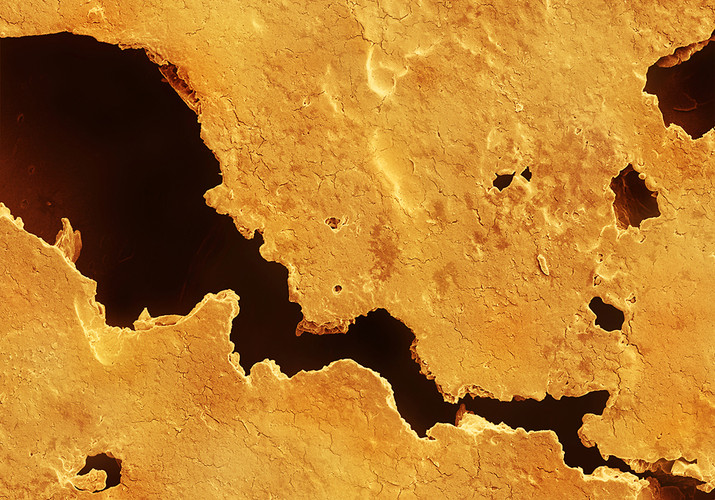
Compare this chemical chaos with that of a simple almond below. Doesn’t it seem that the orderly perfection of our digestive enzymes would work a lot more effectively with this precise molecular structure?
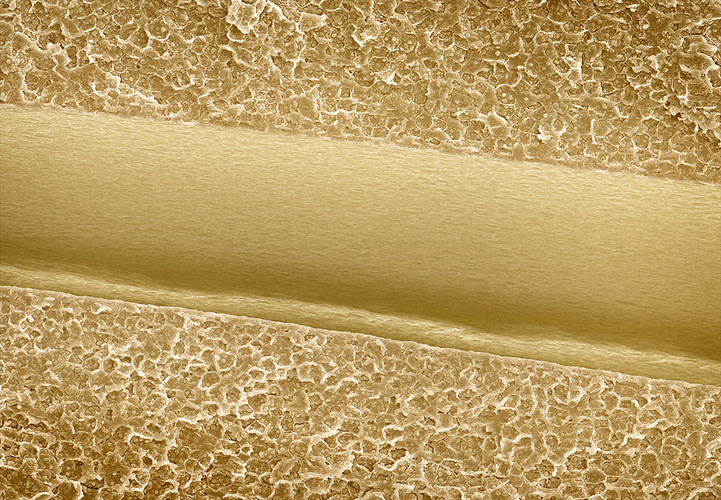
The next time you are tempted to pick up that colorful package from the store shelf, remember that the comforting uniformity you see with your naked eye is a complete illusion. The true molecular nature of that enticing processed food is one of chaos and disharmony that will correspondingly bring decay and decline to the person that eats it.
It is ironically the visual irregularity of whole foods that is the clue to their true nature of orderly symmetry under intense magnification.
If these pictures astound you as they did me, you can view the entire collection of Ms. Alpert’s amazing photo series online here, or at New York’s Citigroup Building (153 E. 53rd St.) through January 31, 2013.
Sarah, The Healthy Home Economist








The pop-tart is so-o-o gross! Yes Christy, you are right on
Gross…yet cool. Does make u think about putting that junk into ur body.
My first thought when I saw the poptarts was, “Ok, but show me what unprocessed food looks like.” And then you did! Wow! What strikes me is the obvious design in the untouched food. There SO is a GOD!!! Wow!
beauty is in the eye of the beholder.
I think this is a fantastic idea. It parallels a reductionist perspective with a wholistic one and in the end we’re left with a beautiful work of art.
My favorite was the pineapple. Absolutely beautiful photography.
@Matt did you look at the pictures? The whole foods look beautiful under the electron microscope.
I think it is so depressing that harful, processed food can be so cheap (16 cents!) which makes it so hard to resist the temptation. When healthy food is so expensive! Why can’t the government subsidize healthy food?!
yuck! once in a blue moon i buy these for my boys {they were 16 cents with a coupon…..} we havent fully transitioned off processed food, but this for sure grosses me out! id like to see a pic like that of sprouted bread or something, just for comparison
Can’t wait to show my kids